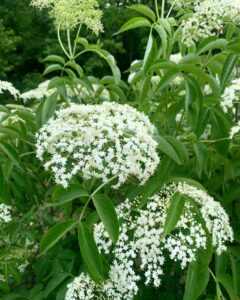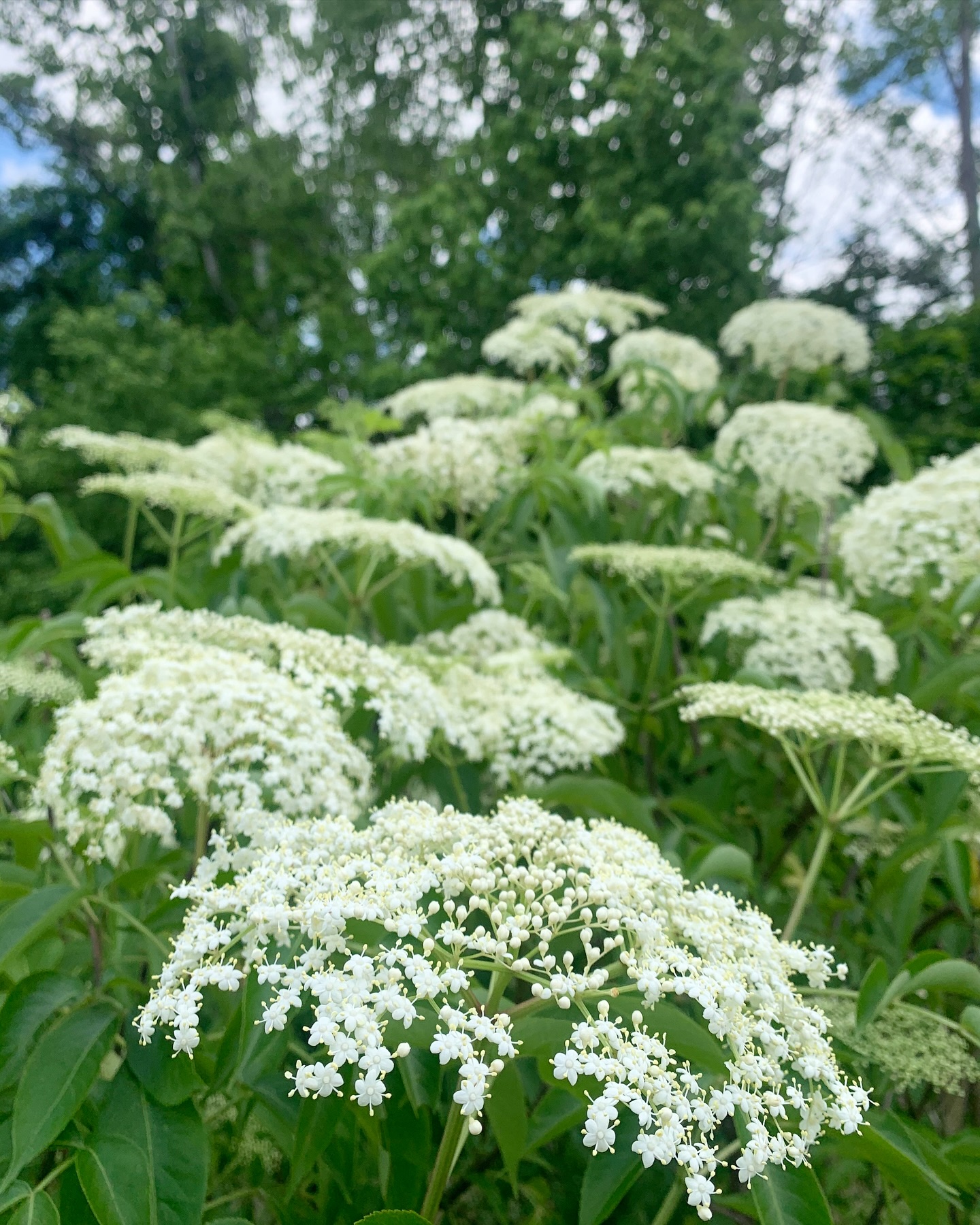by Jacob Crider
Late May through Mid-June marks the seasons for Elderberry blooms!
American Elderberry (Sambucus canadensis) is a deciduous shrub that grows in a wide variety of habitats in the Eastern and Central United States and Canada. They live anywhere from open marshes and fields to shady woodland edges, where they are an important understory plant.
Elderberry will often form a thicket in open areas, providing adequate habitat for turtles, snakes, small mammals, and nesting birds. The compound leaves of this plant provide shade to the branches below in the hot summer sun. Spreading by root systems, these plants will colonize by bodies of water, holding the banks steady.

American Elderberry has a white inflorescence of small little white flowers, providing fresh pollen and nectar to pollinating insects like butterflies, beetles, and bees. The flowers are also edible to humans, and have a strong, delicate, and pleasant aroma. The berries that follow, usually ripening in July-August, are a favored food for birds and other wildlife.
The berries are edible to humans but poisonous if consumed raw. The berries must be cooked down to reduce the toxicity and are a fantastic supplement for immune support. Most foragers will make jams, syrups, and pies, but they can also be made into wine and tinctures.
Keep your eyes out for American Elderberry on your next trip to CMNP and consider planting them in your yard for benefiting native wildlife and to provide a small food source at your own home.


